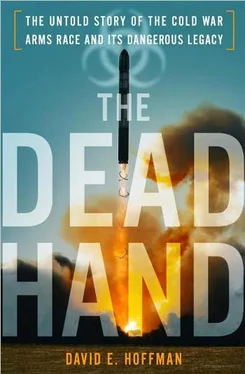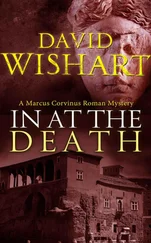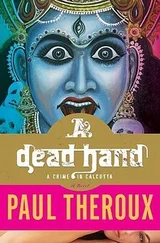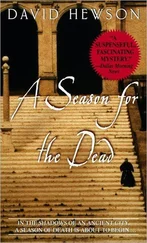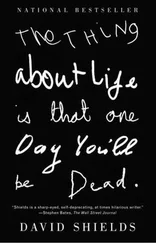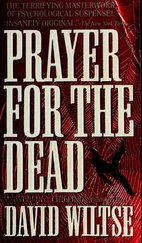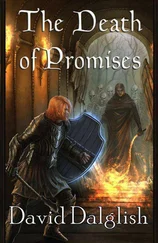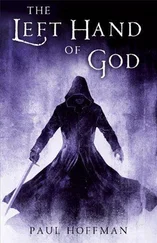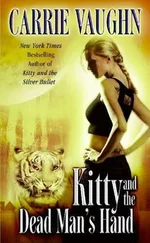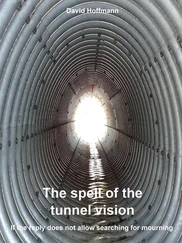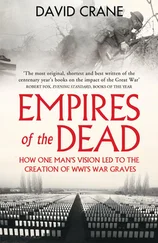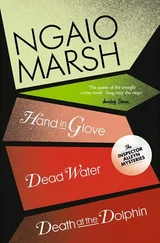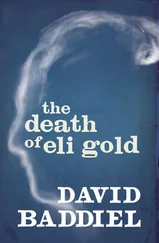19 Management and Disposition of Excess Weapons Plutonium , Committee on International Security and Arms Control, National Academy of Sciences, (Washington, D.C.: National Academy Press, 1994).
20 Matthew Bunn, interview, Oct. 4, 2004, and communications Aug. 24, 2008, and Oct. 11, 2008. Both Fairfax and Bunn found that one way to ease the mistrust was to arrange visits by the Russians to facilities in the United States.
21 Rensslaer W. Lee III, Smuggling Armageddon: The Nuclear Black Market in the Former Soviet Union and Europe (New York: St. Martin’s Griffin, 1998), pp. 89–103.
22 State Department cable Moscow 024061, Aug. 23, 1994, released in part to author under FOIA.
23 Von Hippel, interview, June 1, 2004. “My Draft Recommendations and Notes from Mayak Workshop,” von Hippel files, Oct. 23, 1994. Von Hippel, “Next Steps in Material Protection, Control, and Accounting Cooperation,” Nov. 15, 1994.
24 They were uranium metal, uranium oxides, uranium-beryllium alloy rods, uranium oxide-beryllium-oxide rods, uranium-beryllium alloy, uranium-contaminated graphite and laboratory salvage. Memorandum, Defense Nuclear Facilities Safety Board, Dec. 21, 1995. Beryllium is an ingredient in making nuclear warheads.
25 “DoD News Briefing,” Wednesday, Nov. 23, 1994. Office of the Assistant Secretary of Defense (Public Affairs), www.defenselink.mil .
26 The United States paid Kazakhstan about $27 million for the material. About $3 million was paid to the Ulba plant, and Weber had the privilege of presenting the check to Mette.
27 Bunn, interview by author. Holdren later provided a summary of the PCAST study in an open paper, “Reducing the Threat of Nuclear Theft in the Former Soviet Union: Outline of a Comprehensive Plan,” John P. Holdren, November 1995. The title of the PCAST study was “Cooperative U.S./Former Soviet Union Programs on Nuclear Materials Protection, Control and Accounting,” classified S/Noforn, Office of Science and Technology Policy, Executive Office of the President, March 1995.
28 Bunn, communication with author, August 25, 2008. Also see Andrew and Leslie Cockburn, One Point Safe: A True Story (New York: Anchor, 1997), Ch. 11. On Sept. 28, 1995, nearly four months after the briefing, Clinton signed a presidential order, PDD-41, “Further Reducing the Nuclear Threat.” The order gave the Energy Department primary responsibility for nuclear materials protection in the former Soviet Union, a shift from the Defense Department. Bunn helped draft the presidential order, but he told me the lack of high-level support after it was signed meant it had less impact than he had hoped.
29 Engling, interviews, Sept. 29 and Oct. 13, 2003.
30 The highly-enriched uranium was kept at the institute’s facility in the suburb of Pyatikhatki. Nuclear Threat Initiative, www.nit.org .
CHAPTER 22: FACE TO FACE WITH EVIL
1 Acting CIA director William Studeman said the U.S. intelligence community believed the Russian Defense Ministry wanted to continue supporting research into dangerous pathogens and maintain facilities for war mobilization of biological weapons. See “Accuracy of Russia’s Report on Chemical Weapons,” FOIA, www.cia.gov . The document appears to have been written in 1995.
2 See Ken Alibek with Stephen Handelman, Biohazard: The Chilling True Story of the Largest Covert Biological Weapons Program in the World—Told from Inside by the Man Who Ran It (New York: Random House, 1999), Ch. 19, pp. 257–269.
3 Gennady Lepyoshkin, interview, March 28, 2005.
4 In addition to Weber and Lepyoshkin interviews, this account is based on photographs, forty-nine documents and nine videotapes describing Stepnogorsk before and after dismantlement obtained by the author under the FOIA from the U.S. Defense Threat Reduction Agency, 2005–2007. Other sources included Roger Roffey, Kristina S. Westerdahl, “Conversion of Former Biological Weapons Facilities in Kazakhstan, A Visit to Stepnogorsk,” Swedish Defense Research Agency, FOI-R-0082-SE, May 2001; and Judith Miller, Stephen Engelberg and William Broad, Germs: Biological Weapons and America’s Secret War (New York: Simon & Schuster, 2001), pp. 171–176.
5 Anne M. Harrington, “Redirecting Biological Weapons Expertise: Realities and Opportunities in the Former Soviet Union,” Chemical Weapons Convention Bulletin , no. 29, Sept. 1995, pp. 2–5. This account is also based on an interview with Harrington.
6 Weber recalled, “To me what was so interesting was the planning. They were going to hit us with nuclear weapons, then hit us with biological weapons to kill those that nuclear weapons missed. Then, wipe out our crops and our livestock to deny the ability of those who survived to live, to feed themselves. And they were going to grow crops and raise livestock in that post—nuclear exchange environment.”
7 Nikolai Urakov, speech text and author’s notes, May 24, 2000.
1 They published their appeal in the Wall Street Journal , Jan. 4, 2007, p. A15. Also see Reykjavik Revisited: Steps Toward a World Free of Nuclear Weapons , Shultz et al., eds. (Stanford: Hoover Institution Press, 2007). The four authors established the Nuclear Security Project. See www.nuclearsecurity.org . Also see Hans M. Kristensen, Robert S. Norris and Ivan Oelrich, From Counterforce to Mutual Deterrence: A New Nuclear Policy on the Path Toward Eliminating Nuclear Weapons . Occasional Paper No. 7, FAS and NRDC, April 2009.
2 Warhead data are from the authoritative Nuclear Notebook, by Robert S. Norris and Hans M. Kristensen, Bulletin of the Atomic Scientists , vol. 64, no. 1, pp. 50–53, 58, March/April 2008, and vol. 64, no. 2, pp. 54–57, 62, May/June 2008.
3 Bruce G. Blair, “De-alerting Strategic Forces,” Ch. 2 in Reykjavik Revisited . Blair estimates that 1,382 U.S. and 1,272 Russian missiles are maintained on high alert, p.57.
4 “The Nunn-Lugar Scorecard,” Sen. Richard Lugar, R-Ind., accessed at www.lugar.senate.gov .
5 Matthew Bunn, Securing the Bomb , Project on Managing the Atom, Belfer Center for Science and International Affairs, John F. Kennedy School of Government, Harvard University, commissioned by the Nuclear Threat Initiative, 2008, pp. 90–93.
6 Bunn, p. 51.
7 Stephen Bourne, ISTC, communication with author, Dec. 8, 2008. The total project funding as of December 2008 was $804.45 million. Not all the scientists were receiving these grants all the time, but the author found many examples in which the grants were a lifeline for the weapons scientists and engineers.
8 “Vozrozhdeniya Island Pathogenic Destruction Operations (VIPDO) Final Report,” Cooperative Threat Reduction Program, June 6, 2002, obtained by author under FOIA from Defense Threat Reduction Agency. The anthrax was doused in calcium hypochlorite.
9 One of the biggest mistakes was a facility which the United States built, at a cost of $95.5 million, to convert toxic liquid rocket fuel and oxidizer to commercial products. After the money was spent, the Russians informed the United States that they had used the fuel for space launches. Cooperative Threat Reduction Program Liquid Propellant Disposition Project (D-2002-154), Office of the Inspector General, Department of Defense, Sept. 30, 2002. Another puzzle has been the Russian handling of the Fissile Material Storage Facility. Although it was built to handle one hundred metric tons of plutonium or four hundred tons of highly-enriched uranium, the Russians have loaded only about one-sixth of it, and with plutonium only. It is not clear why such an expensive and modern facility remains so empty. The United States and Russia have been in conflict over congressional demands for a degree of transparency about what is stored there. Nunn and Lugar, interviews with author after visit to the facility, Aug. 31, 2007.
Читать дальше
